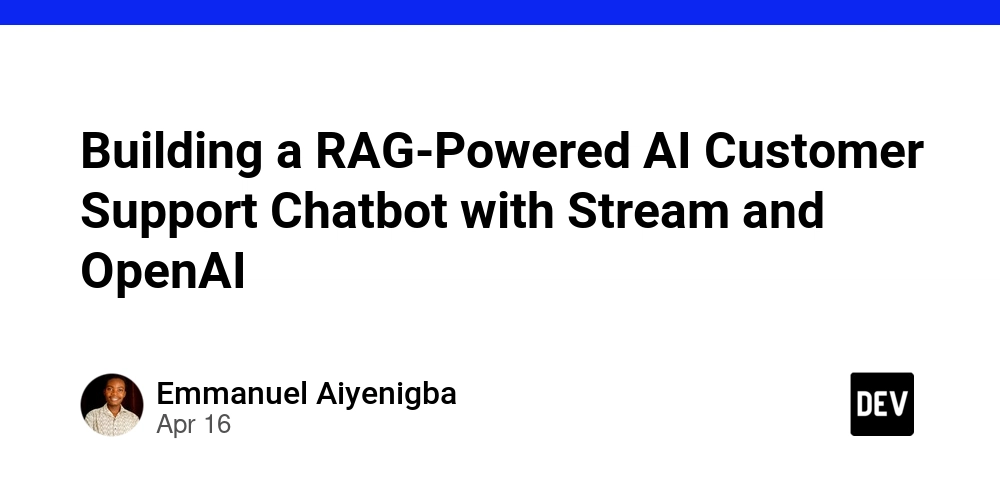Dev
1w
409

Image Credit: Dev
Building a RAG-Powered AI Customer Support Chatbot with Stream and OpenAI
- Retrieval Augmented Generation (RAG) allows Large Language Models (LLMs) like GPT-4 to access external knowledge sources for better responses, making them effective for customer support chatbots.
- RAG provides relevant information from knowledge bases as context during response generation, creating automated customer support systems.
- Tutorial guides building a RAG-powered chatbot using Stream, OpenAI's GPT-4, and Supabase's pgvector.
- Vector database set-up involves enabling pgvector, creating table for documents with content and embedding columns, and implementing a match_documents function for similarity searches.
- Express server is set up to create and store vector embeddings from knowledge base using OpenAI embeddings API and Supabase.
- Authentication for customers is managed with Stream, where a token is generated and sent to the frontend for user/channel authentication.
- A route in Express handles customers' queries, generates embeddings, performs similarity search, leverages context from the knowledge base for AI responses using OpenAI chat completions.
- React with Vite is used at the frontend to create the chat UI, connecting to the backend server for handling customer queries and responses.
- Chat UI includes components for sending messages, interacting with the AI Support Bot powered by OpenAI, and displaying responses in the support channel.
- Application can be extended for human support requests, multi-user collaboration, and exploring different technologies for building RAG systems.
Read Full Article
24 Likes
For uninterrupted reading, download the app